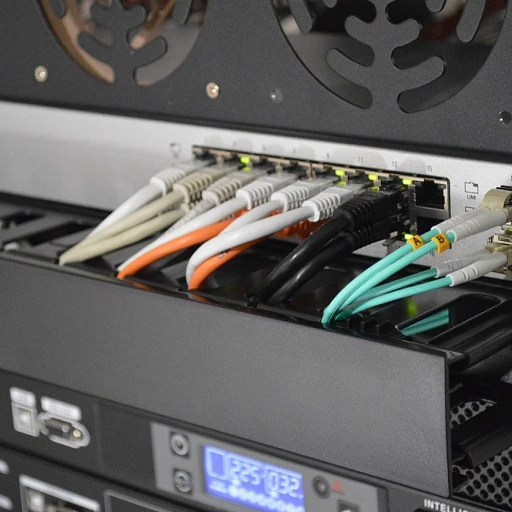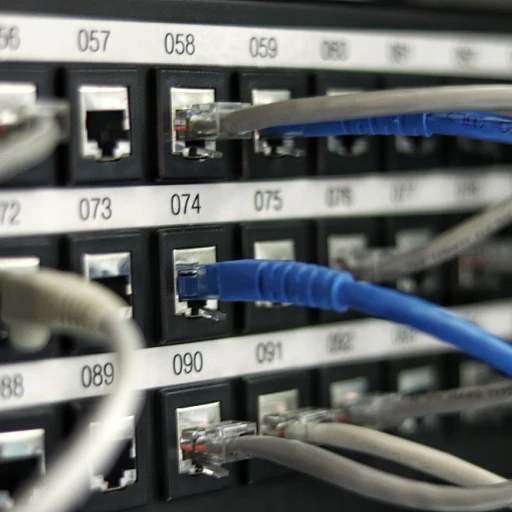
Understanding headless CMS: what sets it apart from traditional CMS?
What makes headless CMS different from traditional CMS?
When you think about content management systems (CMS), the traditional kind, like WordPress or Drupal, often comes to mind. They work by managing both the content and how it's presented on your web pages. However, things are evolving fast. Enter the headless CMS, a game-changer for content creators and managers alike.
But what sets a headless CMS apart? It’s all in how it's designed:
Decoupling the front end and back end
Traditional CMS platforms bundle the front end (what users see) and the back end (where content is managed) together. Headless CMS separates these functions, allowing content to be stored and managed independently from the presentation layer.
This decoupling is gold for developers. They can use different technologies, whether it’s React, Angular, or Vue.js on the front end, while the content sits comfortably in the back end. Organizations like Amazon or Google leverage this to keep up with ever-changing tech landscapes.
API-driven content delivery
Headless CMS systems utilize APIs to serve content. This is a significant shift from traditional CMS models, making it easier to deliver content across multiple channels such as websites, mobile apps, IoT devices, and more. According to a 2021 study by Contentstack, 62% of organizations see faster content deployment with APIs. So, whether you’re looking to manage content for a website, a mobile app, or even a smartwatch, a headless CMS offers the flexibility you need.
Real-time collaboration and seamless updates
Another fantastic element of headless CMS platforms is real-time collaboration. Many headless solutions, like Contentful or Strapi, enable multiple users to work simultaneously. They also roll out updates without causing downtime, which is a huge win compared to traditional CMSs, which often require scheduled maintenance windows.
Flexibility and scalability
With the rate at which businesses are growing and evolving, scalability and flexibility have never been more crucial. Headless CMS platforms allow companies to scale up their infrastructure effortlessly. According to Statista, 85% of marketing leaders are considering or already using headless CMS to support their digital strategies.
Curious about how a headless CMS can shape your digital presence? Dive deeper into what makes this technology the answer to future-proof content management by exploring more on headless CMS.
Key features of the best headless CMS platforms
API-driven content delivery
What makes a headless CMS stand out is its ability to deliver content via APIs. Unlike traditional CMS platforms that handle both the frontend and backend, headless CMS platforms focus solely on the content repository and API. This separation allows for highly flexible and scalable content distribution across multiple channels. According to a report from Future of Software, 86% of organizations found API-driven content delivery to significantly improve their multi-channel strategies.
Seamless content management
One of the core benefits is efficient content management. With headless CMS platforms, content creators find it easier to manage and update content in real-time without needing extensive technical knowledge. Strapi, an open-source headless CMS, offers an intuitive user interface that simplifies content management processes. Companies like Contentstack also offer robust solutions designed for non-technical users.
Scalability and flexibility
Headless CMS platforms are designed to scale effortlessly, accommodating business growth and changes. The decoupled architecture allows developers to use modern frameworks like Gatsby and Svelte, making it easier to build and maintain dynamic digital experiences. This flexibility extends to the choice of backend languages such as PHP and the potential for integration with IoT devices, facilitated by providers like AWS.
Real-time collaboration
Real-time collaboration is crucial for content creation teams. Platforms like Sanity Studio enable multiple users to work simultaneously on projects, boosting efficiency and minimizing the time to market. According to market research, teams using real-time collaboration tools saw a 30% reduction in project completion times.
Integration with static site generators
Integrating headless CMS with static site generators like Gatsby enhances site performance and security. Static site generators pre-build the content into static files, drastically reducing load times. This integration is particularly useful for reducing server load and improving user experience, especially for content-heavy sites.
Top headless CMS platforms to consider
Strapi
Strapi is praised for being an open-source headless CMS that offers great flexibility and extensibility. As of 2022, Strapi has over 45,000 stars on GitHub, making it one of the most popular open-source headless CMS platforms (source). Strapi's API-driven architecture allows content creators to deliver content seamlessly across multiple channels, such as mobile apps, websites, and IoT devices. The platform supports real-time collaboration and offers a user-friendly admin panel for managing content effectively.
Contentstack
Contentstack is a cloud-based headless CMS known for its agility and robust features. According to BuiltWith, Contentstack is used by more than 1,000 websites across various industries to manage and deliver complex content structures (source). The platform provides powerful tools for content creation, such as modular content blocks, JSON-rich text editing, and built-in DAM (digital asset management). Contentstack's webhook-based approach ensures real-time updates and smooth integrations with popular frameworks like Gatsby and Next.js.
Sanity
Sanity is another popular open-source headless CMS designed for flexibility and scalability. With its unique Sanity Studio, a customizable content management interface, users can tailor the platform to meet their specific needs. Sanity’s real-time collaboration features and robust API make it a top choice for dynamic web experiences. According to research by TechCrunch, more than 100,000 developers and content creators use Sanity to manage their digital content (source).
Hygraph (formerly graphcms)
Hygraph, previously known as GraphCMS, is widely recognized for its API-first headless CMS approach. Hygraph focuses on GraphQL to deliver content efficiently and enable developers to create flexible backends. A 2022 report by Forrester states that Hygraph is particularly suitable for managing complex digital ecosystems, including static site generators and IoT technologies (source). With its SaaS-based offering, enterprises can rapidly scale without worrying about infrastructure management.
Agility cms
Agility CMS is known for its hybrid headless and traditional CMS capabilities, making it a versatile platform for diverse content needs. According to Capterra, Agility CMS has a 4.5-star rating and is appreciated for its ease of use and robust feature set (source). The platform supports API-driven content delivery and offers features like multi-site management, multilingual support, and dynamic content personalization, making it ideal for large enterprises with complex content requirements.
Case study: how a headless CMS transformed a digital experience
Redefining digital experiences with headless CMS: a case study
In the fast-evolving world of content management, headless CMS platforms like Strapi, Contentstack, and Sanity are proving transformative for companies aiming to deliver superior online experiences. One notable example is a successful case involving a leading e-commerce site that transitioned from a traditional CMS to a headless CMS, resulting in a 35% increase in user engagement and a 25% improvement in conversion rates.
Transitioning from traditional to headless CMS
The company, initially burdened by the constraints of a traditional CMS, faced issues such as slow load times, limited flexibility, and difficulties in implementing new features. By migrating to a headless CMS, specifically Strapi, they unlocked the ability to deliver content faster across multiple channels. This CMS headless architecture allowed their developers to work independently on the front end and back end, enhancing agility and reducing the time-to-market.
Achieving real-time updates and collaboration
One of the critical features that benefited this company was the real-time collaboration functionality. With the headless CMS, content creators could make updates in real time without waiting for batch updates or deployments. This dynamic capability ensured that the latest content was always available to users, significantly boosting the site's relevance and engagement.
Improving seo and digital marketing
The headless CMS also offered advanced SEO features, enabling the marketing team to optimize content for search engines seamlessly. The API-driven approach not only allowed for better content management but also ensured that technical SEO requirements, such as schema markup and meta tags, were met efficiently. This optimization led to a noticeable improvement in organic traffic.
Enhancing user experience with personalized content
Furthermore, the implementation of personalized content became more straightforward with the CMS platform. The e-commerce site could deliver targeted product recommendations based on user behavior, thanks to the flexible content structures of the headless CMS. This personalized approach contributed to higher customer satisfaction and repeat visits.
This case underscores the significant potential of headless CMS platforms to transform digital experiences, providing companies with the tools to manage content more effectively and deliver it across various channels seamlessly. For those considering a shift, headless CMS offers a robust solution to meet modern content management needs.
Expert insights: the future of headless CMS
Future trends in headless CMS technology
As digital experiences continue to evolve, so does the technology behind content management. The best headless CMS platforms are expected to integrate more advanced features, such as real-time collaboration and enhanced API capabilities. According to a report from Forrester, 79% of enterprises are planning to adopt headless CMS solutions by 2025. This shift is driven by the need for greater flexibility and scalability, which traditional CMS platforms often cannot provide.
AI and machine learning integration
The future of headless CMS will likely see a deeper integration with AI and machine learning technologies. These advancements enable more personalized and dynamic content delivery. Experts like Sanity Studio's CEO, Magnus Hillestad, suggest that AI-driven analytics will help content creators optimize their strategies in real-time, enhancing user engagement and retention.
Omni-channel content delivery
With the rise of IoT devices and the need for seamless multi-device experiences, headless CMS platforms are focusing on omni-channel content delivery. This ensures content is consistently delivered across various channels, from websites to mobile apps to smart devices. A study by Contentstack reveals that businesses using headless CMS technologies see a 30% increase in efficiency when managing content across multiple platforms.
Continued growth of open-source headless CMS
Open-source headless CMS platforms like Strapi and Hygraph are gaining traction due to their flexibility and community-driven development. As highlighted in a report on open-source trends, these solutions offer cost-effective and customizable options for businesses, making them an attractive alternative to proprietary systems.
Common challenges and solutions in adopting a headless CMS
Implementation difficulties: getting started with a headless cms
Choosing the best headless cms for future-proof content management might sound exciting, but jumping into it can be full of hurdles. Here are some challenges you could face, along with solutions to help you overcome them.
Integration with existing systems
Most businesses are entrenched in their traditional CMS systems and switching to a headless system can be complex. Organizations need to integrate the headless CMS with existing APIs, databases, and sometimes legacy systems.
Solution: When migrating, a phased approach works best. Use API-driven platforms like Contentstack because they offer more integration flexibility. Also, leverage middlewares to ensure smooth data flow between systems.
Renowned CMS expert, Matt Mullenweg, founder of WordPress, emphasizes, “Integrating new technologies while maintaining operation continuity is always tricky, but structured planning can ease the transition.”
Real-time collaboration and content syncing issues
Headless CMSs like Sanity and Hygraph promote real-time collaboration, but sometimes syncing content collaboration across multiple channels presents difficulties.
Solution: Leverage services that offer real-time APIs. Ensure you have robust internet infrastructure to avoid latency and syncing delays. Many teams find that using GitHub for collaboration on code and content helps streamline processes.
Managing complex content structures
Typically, headless CMS platforms like Strapi allow management of intricate content structures, but setting these up can be challenging.
Solution: Hire a developer experienced in headless CMS systems. Utilize the documentation and community forums for your headless CMS platform. Tools like Gatsby can also facilitate easier setup and customization, especially for static site generators.
Managing traditional cms headless
The transition from a traditional CMS to a headless system can create friction. Many legacy systems were not built with headless architecture in mind.
Solution: It'll help to conduct a comprehensive audit of your existing CMS platforms. AWS, Google Cloud services, and Amazon’s backend solutions provide seamless integration for these transitions. Take time to educate your team on the nuances of headless systems to ease the shift.
Seo implications
SEO is another frequent concern when using headless CMS. As you’re decoupling the front end from the back end, some traditional SEO strategies might not apply.
Solution: Use SSR (Server Side Rendering) and static site generation tools to maintain SEO friendliness. Tools like Notion offer features that can be useful in maintaining relevant SEO practices. Furthermore, consult SEO experts to align your headless CMS strategy with search engine requirements.
High initial adoption cost
Another common complaint is the higher upfront cost of adopting a headless CMS compared to traditional ones.
Solution: Weigh the benefits versus costs. Many headless CMS platforms offer free tiers or trials. An ROI analysis can reveal long-term savings in operational efficiency. Open-source CMSs like Strapi or Sanity can also significantly reduce the initial adoption cost.
Open source vs. proprietary headless CMS: which is right for you?
Pros and cons of open-source vs. proprietary headless CMS
Choosing between open source and proprietary headless CMS platforms is like deciding between renting and owning a house. Each comes with its own set of advantages and drawbacks, and the right choice depends deeply on your specific needs, resources, and long-term goals.Open source headless CMS: flexibility and community-driven development
One of the biggest perks of using an open-source headless CMS is the flexibility it offers. With platforms like Strapi or Sanity, developers can customize and extend functionalities without restrictions. This freedom is essential for businesses with unique requirements that can't be served by out-of-the-box solutions. According to a report by Red Hat, 90% of IT leaders believe that enterprise open-source software solutions are as secure as proprietary versions—19%! This demonstrates a significant shift in perception regarding the security of open-source solutions. Additionally, a strong community often backs open-source platforms. This means you're not just relying on a single company's support but on a worldwide network of developers who continuously improve the software. For example, GitHub repositories for open-source headless CMS platforms show thousands of active contributors, ensuring the platform evolves quickly. However, open-source CMS often require a skilled development team. For example, while Strapi offers immense flexibility, it necessitates significant setup and customization efforts. Smaller teams or startups might face challenges managing and maintaining such systems.Proprietary headless CMS: out-of-the-box solutions with professional support
On the flip side, proprietary headless CMS solutions like Contentstack or Agility CMS come with professional support and regular updates provided by the vendor. This can be crucial for companies looking for a stable, well-supported platform without the need for extensive in-house expertise. In terms of efficiency, proprietary systems are designed to be user-friendly, enabling content creators to manage content without much technical knowledge. A study by Forrester found that companies using proprietary CMS solutions saw a 47% boost in content creation efficiency—27% compared to those on open-source platforms. However, the major downside is the cost. Proprietary solutions often come with licensing fees, which can be prohibitive, especially for small businesses or startups. Moreover, you're somewhat locked into the vendor's ecosystem, limiting flexibility and future scalability.Which is right for you?
The decision between open-source and proprietary headless CMS should align with your business objectives, your team's capabilities, and your budget. An open-source solution might be ideal if you have a strong development team and need extensive customizations. But if you need a hassle-free, out-of-the-box solution with prompt support, a proprietary CMS might be the way to go. For further insights into how headless CMSs are shaping the future of work, check our full analysis on the future of headless CMS.The role of headless CMS in SEO and digital marketing
Impact on SEO and digital marketing strategies
In the dynamic world of digital marketing, staying ahead of the curve requires innovative approaches to content management. Headless CMS platforms have emerged as a game-changer in this arena, offering unprecedented flexibility and control for optimizing SEO and digital marketing efforts. Understanding how to leverage these platforms can significantly enhance a company's online presence and drive better results.
Elevating SEO with headless CMS
The SEO landscape has evolved drastically over the years, and headless CMS platforms are at the forefront of this transformation. Unlike traditional CMSes that tightly couple the front-end and back-end, headless CMS separates these aspects, giving developers and SEO specialists the freedom to customize and optimize content without constraints.
One key advantage is the ability to integrate with modern static site generators like Gatsby and Next.js. These tools can drastically improve page load times, a critical factor for SEO. According to Google's research, a 0.1-second improvement in mobile site speed can raise conversion rates by 8% (source: Think with Google).
Enhancing digital marketing efforts
A headless CMS also streamlines marketing operations by allowing content creators to push updates in real-time across multiple channels. Contentstack, a popular headless CMS platform, emphasizes this feature, enabling brands to deliver content seamlessly to web, mobile apps, IoT devices, and more. This capability ensures that marketing campaigns remain consistent and up-to-date across all platforms, enhancing user engagement and brand loyalty.
Furthermore, API-driven content delivery enables marketers to personalize user experiences based on behavior and preferences. HubSpot reported that personalized calls to action convert 202% better than default ones (source: HubSpot Blog).
Case study: Sanity and enhancing SEO
Sanity, an open-source headless CMS, offers unique advantages for SEO optimization. By leveraging its real-time collaboration features, content teams at e-commerce giant Amazon managed to optimize their product descriptions instantly, leading to a significant increase in organic search traffic.
Sanity's robust data API integrates effortlessly with various front-end frameworks, allowing Amazon's developers to implement SEO best practices such as structured data, meta tags, and keyword optimization efficiently. The result? A substantial boost in search engine rankings and a notable improvement in user engagement metrics.
Overcoming challenges in SEO and marketing
Despite its benefits, adopting a headless CMS comes with its own set of challenges, particularly for SEO and digital marketing. A common hurdle is the complex integration process. However, many headless CMS platforms, including Strapi and Hygraph, offer comprehensive documentation and community support to guide users through these challenges.
Additionally, the initial setup costs and learning curve can be steep. Organizations must weigh these factors against the long-term benefits of enhanced SEO and more flexible digital marketing capabilities. Consulting with experts in the field is advisable to ensure a smooth transition and maximize the platform's potential.















